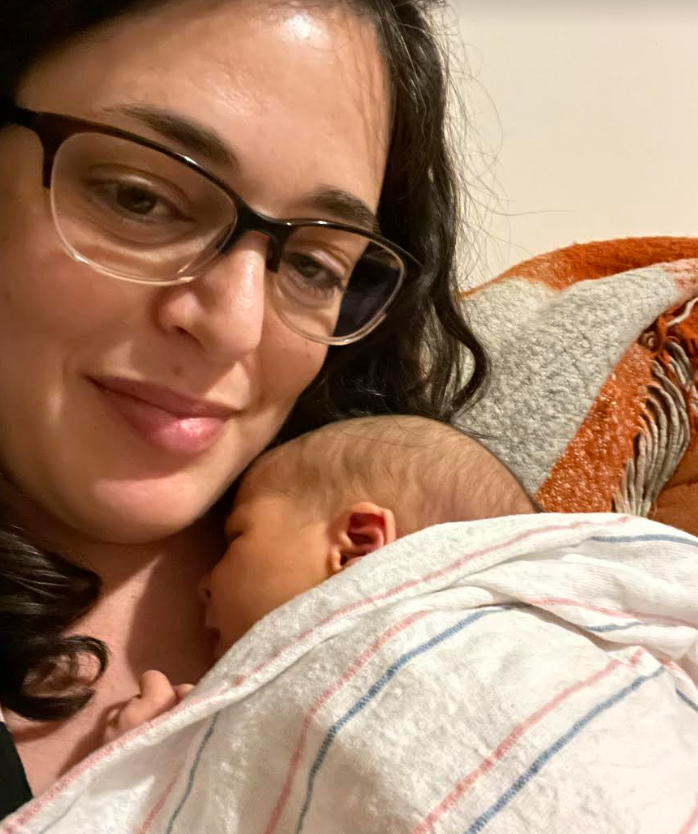
My first year of motherhood was joyful and exhausting in ways I’d only understood abstractly – until I lived it.
As a senior research specialist at Ariadne Labs and a Ph.D. student at the University of North Carolina, I’ve spent years researching maternal and child health. I knew the challenges of early parenthood, but actually experiencing it made me understand how much of the work is invisible.
While my husband and I delight in the pure joy of watching our daughter take her first steps, I can’t help but reflect on how arduous the first year of motherhood has been. And I’ve got the data to prove it.
I turned to data to make visible the unseen workload of new parenthood. I was shocked to find that I barely had a full night’s sleep, we missed several days of day care each month, and feeding my daughter added hours to my workday — even after I went back to work.
I tracked every nursing session, pumping session and day care communication through apps. I analysed my data to see how much time I spent caring for my daughter during her first year.
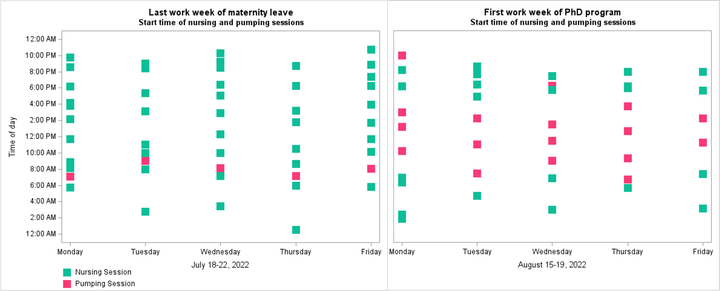
Looking at my data, I understand why I’ve felt so run-down: I worked an extra job all year. Based on the time I spent nursing, pumping and missing work when chil care fell through, I worked an average of 26 additional hours per week, turning my eight-hour workdays into 13-hour days. The work came with some excellent perks ― namely, a daughter who makes me proud every day ― but the job was unpaid and largely unseen.
During maternity leave, I nursed my daughter for over three hours a day on average. This is within the range of guidelines from the Centers for Disease Control and Prevention. After I returned to full-time work and school, I still spent over two and a half hours per day making sure my daughter had enough milk, a time investment that can be cost-prohibitive for families.
My app did not capture the mental load it took to plan my day around pumping. I was grateful I could provide my daughter with breast milk when we were apart, but pumping was uncomfortable, time-consuming, stressful and demeaning — especially when I had to pump in front of my classmates and colleagues.
I went back to work in the middle of the formula shortage, when out-of-stock rates rose to over 90% in some parts of the country. I felt pressure to produce enough milk, because there was no reliable backup. I pumped every two to three hours to produce enough milk for the next day. On days when I came up short, I pumped at night to squeeze out the last couple of ounces that my daughter needed.
As staggering as my calculations are, they are an underestimate and do not capture all aspects of feeding and caring for my daughter during her first year. Regardless of the exact amount of time I spent, one thing is obvious: feeding an infant — through nursing, pumping or formula feeding — is a job in and of itself.
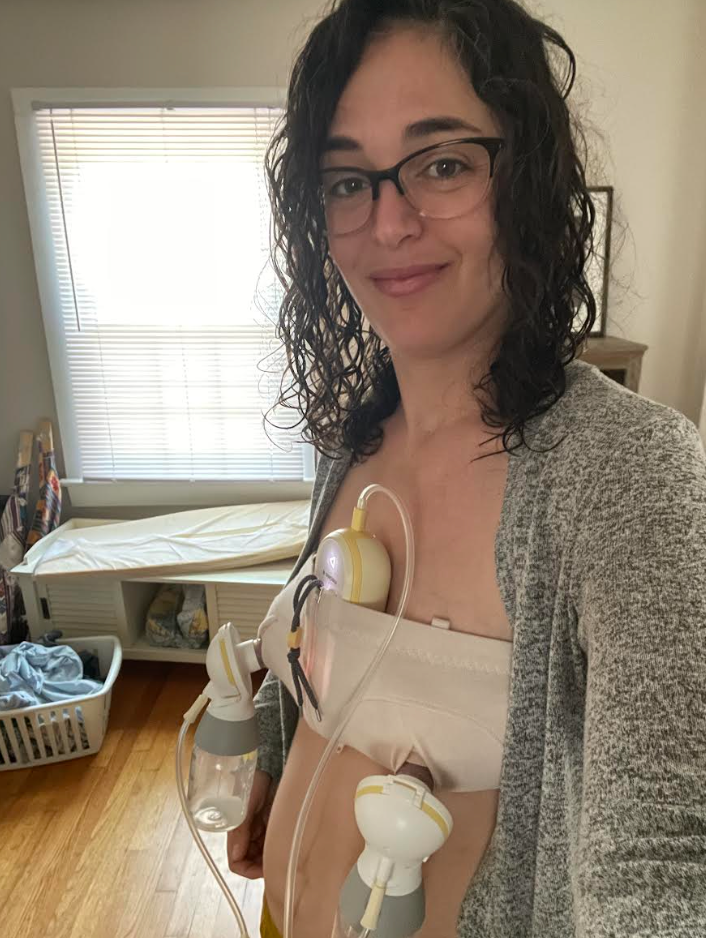
It’s easy to quip about sleep deprivation during new parenthood; it’s almost seen as a rite of passage. Yet when I looked at my data, I found that over 75% of my nights involved interrupted sleep. On average, I woke up to take care of my daughter one and a half times per night. (On my worst night, my sleep was interrupted seven times.)
There were nights I enjoyed sitting up with my daughter. It was quiet. I marvelled at how she was here, how unbelievable it all was. But the nights piled onto days, which piled onto nights, and the sleep deprivation built.
When I returned to work, I was still up multiple times per night — no one told my daughter my maternity leave had ended. Interrupted sleep can affect our health, disrupt our productivity and keep new parents, especially mums, out of the workforce. Studies show that my experience is not unique.
Going back to work means finding childcare. While we finally found a day care we loved with availability, I hadn’t taken into account all the times my daughter wouldn’t be able to go.
We missed an average of four full days of day care per month due to closures, illnesses and doctor appointments. Including partial days, our childcare was interrupted over five days per month on average, or 26% of workdays.
Between my flexible student schedule and my husband’s paid time off, we made it work. But it felt like we were holding our lives together by a thread.
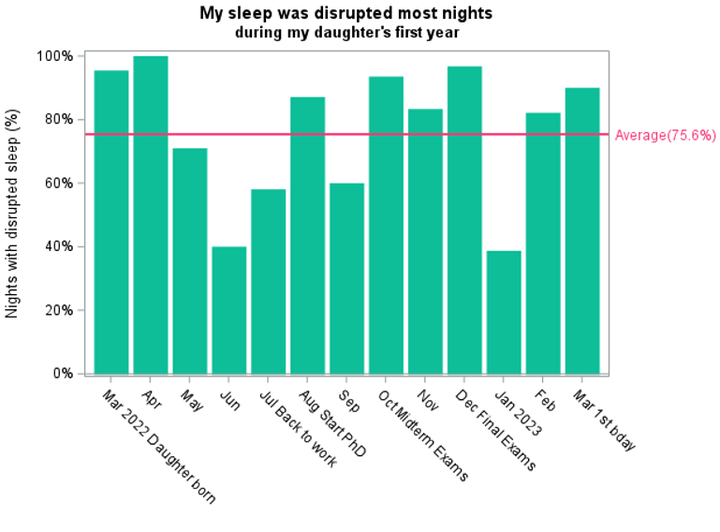
We were able to get by, but millions of Americans can’t afford childcare. In 2022, the estimated median cost of child care ranged from $5,357 to $15,417, representing 8% to 19% of the median family income. While 96% of the highest-paid private industry workers had access to paid sick leave in 2022, only 38% of the lowest-paid workers had access.
Workers are charged twice when their kid can’t go to day care: first by the cost of day care itself, and again by the cost of lost income.
My analysis is only representative of me, and I had it better than most.
My insurance enabled me to choose my provider and carry out a healthy pregnancy without paying a penny out of pocket. But pregnancy care costs families nearly $3,000 out of pocket on average — and that’s with private insurance. For the four in 10 pregnancies covered by Medicaid, pregnancy care is often delayed — it takes time to enroll and find a practice that accepts Medicaid.
I had access to 20 weeks of paid family leave, which put me among the privileged few. (Eighty-five percent of workers do not have access to paid family leave.) The federal government’s Family and Medical Leave Act provides 12 weeks of family leave to eligible workers, but this leave is unpaid ― and in practice, only 56% of workers were even eligible for this leave in 2020.
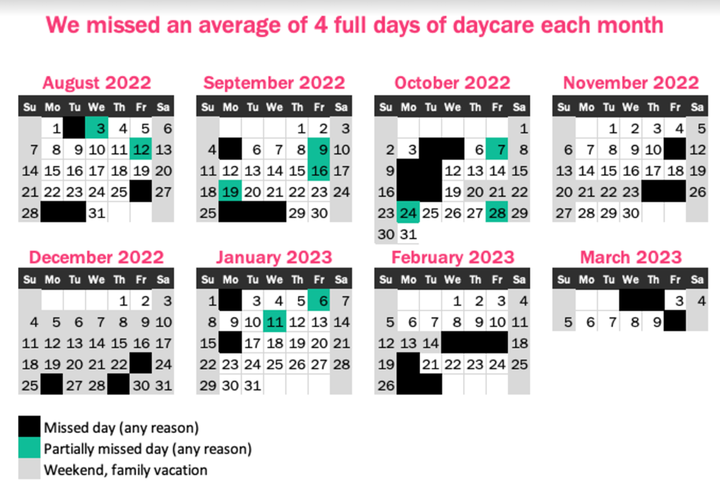
I chose to breastfeed, and I had the means to do so. Paid leave gave me time to establish a breastfeeding relationship with my daughter. My insurance covered lactation consultants when I needed extra help. I paid out of pocket for a postpartum doula, who helped me troubleshoot my pumping equipment and schedule.
There are innumerable factors that made my experience easier than that of most new parents in the United States. And yet my experience was still hard.
The challenges I laid out are interconnected and predictable. Babies eat every two to three hours, whether through nursing, pumping or formula. This affects parents’ sleep and time allocation. Babies’ immune systems are still developing; they are of course going to get sick at day care.
Parents are investing in society — we are spending our time and resources to raise the next generation of Americans. And we’re doing our best. Yet while we’re investing in society, society is not investing in us. We need investments that address the trade-offs that new families are forced to make, such as more generous family leave programs and affordable, high-quality childcare.
The workload of new parenthood is invisible. It happens in the middle of the night, while pumping in closets, and while hidden in plain sight. Work that is invisible is often unrecognised and uncompensated.
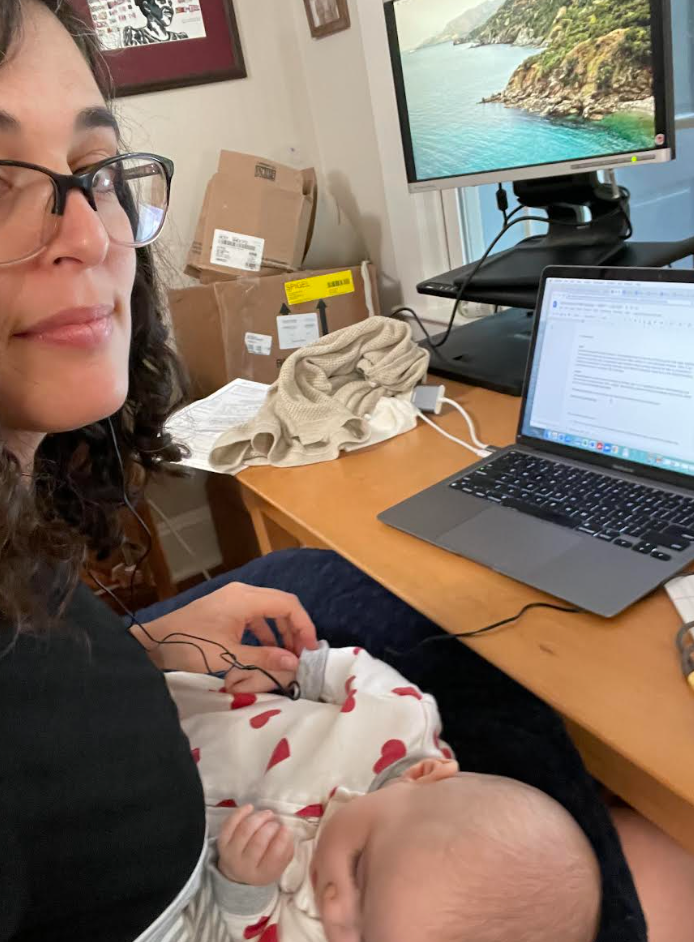
In the past year, my daughter grew from a 7-pound peanut into a baby on the brink of toddlerhood, and I grew into her mum. I don’t lament the time I’ve spent taking care of her. Being her mum is the most rewarding job I’ve ever had. But I do lament the precariousness of new parenthood. It doesn’t have to be this way.
The path forward can seem insurmountable, but we can start by seeing each other. We can shine a light on the workload that new parents carry. I shared my data to make our invisible workload visible.
See our unseen labour, and pay us for our work.
Lauren Spigel is a senior research specialist at Ariadne Labs and a Ph.D. student at the University of North Carolina’s Gillings School of Global Public Health, where she studies the quality and experience of maternal health care. She is a longtime dog mom and first-time human mom, and lives with her family in North Carolina. You can find her on Twitter @laurenspigel.
Do you have a compelling personal story you’d like to see published on HuffPost? Find out what we’re looking for here and send us a pitch.